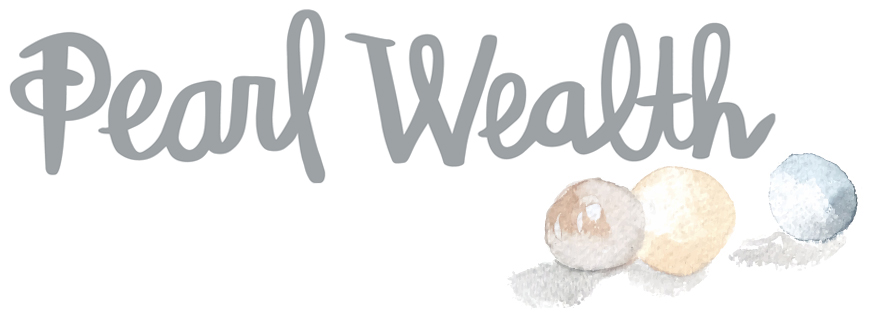Gratitude and Grace
4th Quarter 2022 Commentary • Kori Allen, CFP®
Like many, during the last few months of the year, we take stock of our abundance and express thanks to our loved ones—family, friends, clients. Our gratitude is also demonstrated through charitable giving to organizations and communities, primarily completed during the holiday season.
In the past, we’ve included a list of our charities with our holiday card, but this year, that felt perfunctory. As we looked over the ever-expanding list we recognized a trend. The gifts that we’ve given as thanks for client referrals, and our own charitable interests, focused more on caring for others: for increasing quality of life for individuals and communities.
Much has been written about investing through an “ESG” lens. Besides fundamental financial analysis, our investment discipline requires review of companies’ efforts in managing risks and opportunities related to the environment, climate change, social issues and governance. Many reporting agencies provide analytical data that standardizes and quantifies managements’ effectiveness in these areas. To be sure, some issues can be readily quantifiable while others are more qualitative. For instance, it is easy to quantify a company’s effectiveness in energy conservation: associated costs may be lower and savings most likely will increase the profit margin.
And that’s what struck us: our giving was more in the qualitative realm while our investment discipline skews quantitative.
This Fall, Seeding Justice, an Oregon non-profit working for social change, hosted an event discussing “Uneasy Street: The Anxieties of Affluence,” a book by Rachel Sherman. The book seeks to illustrate US cultural norms and narratives around money placed against a backdrop of our extreme inequalities. In some regard, there are parts that are not relatable: she has profiled New York families earning greater than $500,000. However, there are very American themes worth contemplating.
As a culture, we value hard work. This theme carries through many of our planning discussions. Often, more worth is placed upon working outside of the home and being compensated monetarily. This can create tension individually and between partners. Intellectually couples can appreciate each other’s contributions, yet culturally—and possibly emotionally—there is a disconnect. If the contribution is not monetary, then it may be viewed as lesser. Financial planning is more-often-than-not viewed as a quantifiable exercise: larger or increasing numbers are “better” or more virtuous.
This worthiness or unworthiness tied into “work” also plays a part when people transition to retirement, downshift careers or inherit assets. How can a person conscientiously utilize and steward their assets when they are no longer earning, earning less, or did not “earn” those assets?
As financial advisors, it is our sincere hope to understand our clients’ values and goals. We view the qualitative aspects—the why—the meaning—of lives as paramount in building financial and investment plans. Perhaps someone is not contributing to an increasing income, yet their “work” reduces expenses or preserves or helps grow net worth or adds to quality of life. In other phases, assets, representative of someone’s “work”, may be utilized to help live comfortably and/or achieve goals and dreams that increase satisfaction, meaning
or comfort.
There are darker sides to this American preoccupation with hard work. We often believe that anyone can work themselves out of a difficult financial situation or achieve “middle class” from modest beginnings. Sherman cites many studies in stating that in 2010 the top one percent owned more than 34% of the net worth; the next 9% owned another 40%. This left 25% of the net worth for the remaining 90 percent of our population. Since 2010, economic inequality has only widened as tax code and other policies continue to favor those with greater income and wealth. It is increasingly difficult or almost impossible for those in the 90% to change their economic class significantly, especially by labor.
The book also illustrates the disconnect with how we pay and value workers who assist in jobs we normally could accomplish on our own if we were not pursuing a salary and growing our own net worth. Consider domestic workers cleaning homes, landscapers weeding, or the local barista, all doing work the 10% could accomplish if there was more time and less focus on increasing the financial bottom line. These workers are often “others” (women, immigrants, etc.) needing to work multiple jobs just to pay rent. States vary, but the national minimum wage is $7.25 per hour which would approximate $1200 per month. $1200 is also the average national rent for a 2-bedroom apartment. (statistica.com)
After a year of a difficult market, on the heels of outsized returns, these themes have been grounding us. We profoundly appreciate the opportunity to help in both quantifiable and qualitative ways and we endeavor to grow and evolve our own awareness and expertise.
We are grateful for so much.
The following received our time and contributions this year:
The Library Foundation (Multnomah County)
The American Indian College Fund
The United Negro College Fund
World Central Kitchen
The Nick Wilson Charitable Group
Street Soccer
Adelante Mujeres
Brown Hope
Portland State University Foundation
Portland Playhouse
Habitat for Humanity
March for Our Lives
Dougy Center
Framework International
NARAL
There are plenty of ways to give back. If you are interested in formalizing a giving program, let us know. There are many ways to integrate your generous spirit in a financial plan.
Disclosure: This commentary was prepared as general communication between Pearl Wealth and its clients. Financial plans and investment portfolios should be tailored to an individual’s unique circumstance; therefore, this should not be relied upon as research, investment advice, or a recommendation regarding any products, strategies, or any security in particular. This material is strictly for illustrative, educational, or information purposes and is subject to change as conditions vary. Investment involves risk, including possible loss of principal.
